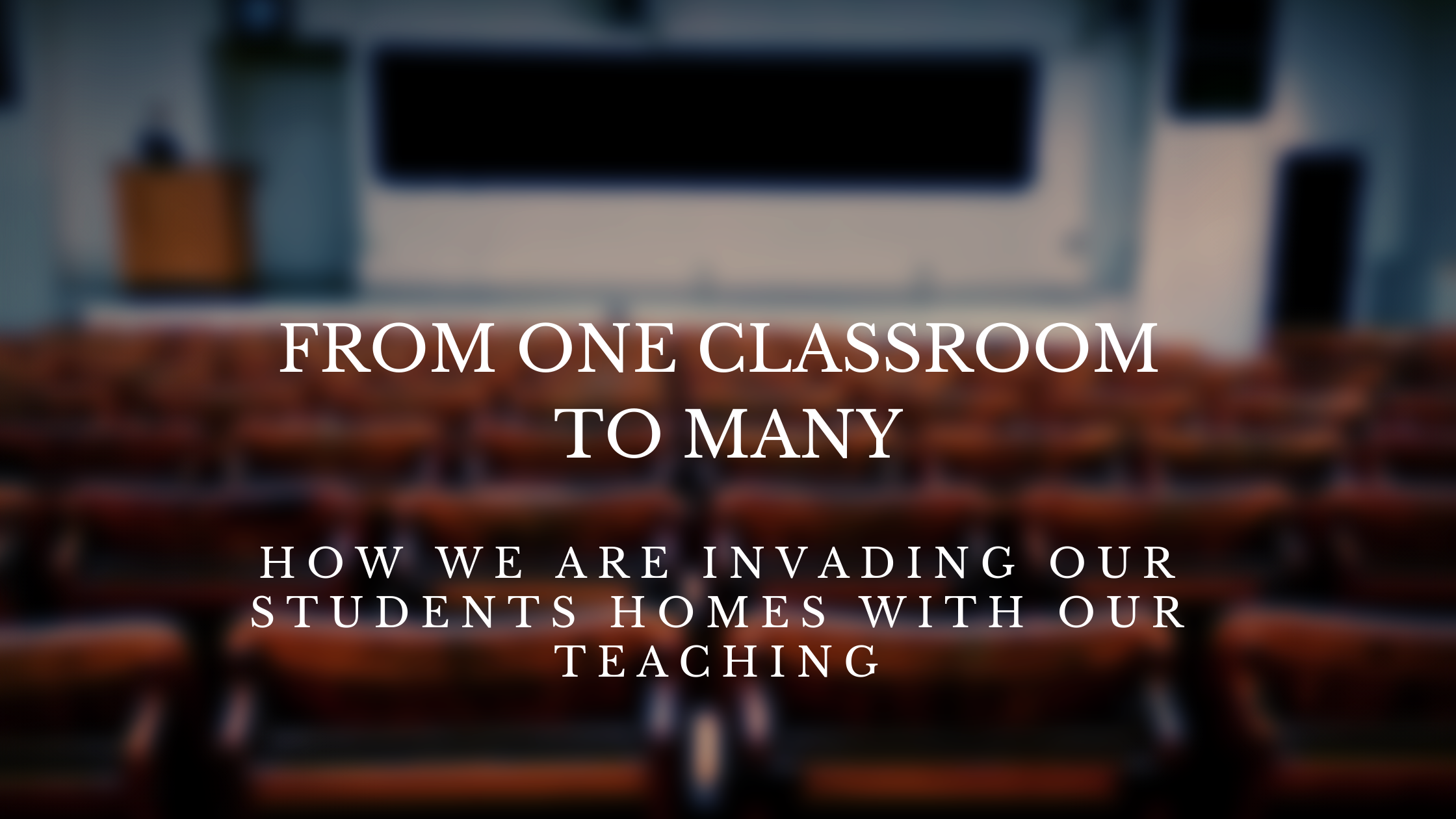I was listening yesterday to the “You got this” podcast. It is a podcast that Thompson Rivers University puts out weekly as a form of support for their faculty as they transition to this “pivot” (Not a fan of this commonly used term but that’s another discussion for another time) to online teaching. In this particular episode, the host (the incomparable Brenna Clarke Gray, do yourself a favour and follow her on Twitter) talks about how some have said that they are no longer teaching in a classroom.
She pushes back a bit on that.
We do still teach in a classroom, it’s just that the setting has changed. Instead of teaching 16, 32, 300 students in one classroom, we are now teaching in 16, 32, 300 classrooms. We are being beamed magically via the interwebs into each of our student’s homes.
This should be a cause for pause.
We are teaching in our students most intimate spaces.
As I write this I have just deleted a line where I mention that these are “safe” spaces. For some home is a safe place, it has warmth, family, protection.
For others, home is far from safe. It is a place of abuse, confusion, tension, unsettledness. School used to be their safe place.
Intimate does not equal safe.
This has been sitting with me all day. What am I to do with this?
Knowing is half the battle

When I was a kid (and I know I am dating myself here) I was a huge fan of the cartoon G.I. Joe. After the Joes had defeated Cobra commander’s nefarious plot to rule the world, they would have a short skit that involved some kids getting into trouble (bullying, smoking, walking on thin ice). The Joes would show up and set the kids straight and the segment would end with one of them saying “now you know, and knowing is half the battle”.
Realizing that I am being brought into spaces that may not be safe carries responsibility. Always in the back of my mind I need to be aware that there are students who:
- Have parents that may not want them in this course.
- Live in small quarters with many others.
- Have to work full time to attend this course.
- Have young siblings/children that may be in the same room as them.
- Are embarrassed by how they look, sound, where they live.
Practically what can I do with this? How does this inform my pedagogy?
As with all good teaching, it has to begin by putting the students first. This is a no brainer and I imagine if you’re reading this you’re on board with this line of thinking. As much as we say it what do we mean by it?
Here are some things I’ve started to be aware of:
- Knowing that there may be small children in the room at any time, I watch my language, humour, and content I show to the class. Not that I was up in front of my class cussing and telling inappropriate jokes in a face to face setting but I do teach trades and the colour of language from the students can be problematic. Also any videos I share have to be a hard PG.
- I will not require my students to EVER have their webcams on. This is a hill I am willing to die on. Should they feel comfortable that is fine, they have that option. I would rather start with the assumption they will not and work with that. This also means no online proctoring.
- I will not require my students to use their mics. Some are self-conscious of their accents and I have had more than one student confide in me that they have a severe speech impediment. This means that some of my assignments need parallel paths to the same outcomes.
These are just a few of the things that I am trying. It is not an exhaustive list and it is by no means complete. As I meet and get to know new students there will always be new challenges and considerations.
In the words of the great Uncle Ben, as educators we are in a position of power and ” with great power comes great responsibility”.
Shared by:

Sorry, but comments are not enabled on this site.